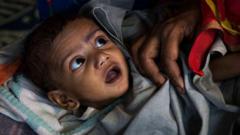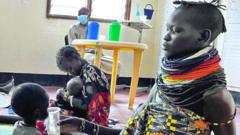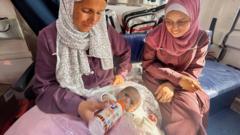A study by Ashwini Deshpande and Rajesh Ramachandran reveals that caste-related disparities contribute significantly to India's child stunting crisis, which affects 35% of children under five, offering a more nuanced view of malnutrition in the region.
Unraveling the Layers of India's Child Stunting Crisis

Unraveling the Layers of India's Child Stunting Crisis
New research highlights the impact of social identity and caste discrimination on high child stunting rates in India compared to Sub-Saharan Africa.
Decades of caste discrimination have fueled the child stunting crisis in India, where an alarming 35% of children under five suffer from stunting, a measure reflecting critical nutritional deficiencies. This rate surpasses that of many countries in Sub-Saharan Africa, where the average is slightly lower at 33.6%. The recent research conducted by Ashwini Deshpande from Ashoka University and Rajesh Ramachandran from Monash University highlights that focusing solely on physical growth overlooks the profound influence of social identity, particularly caste.
Child stunting occurs when children are significantly shorter than expected for their age, which can have lifelong ramifications. The importance of the first 1,000 days of life—marked by crucial brain development—underscores the need for adequate healthcare, nutrition, and safe environments. Both India and Sub-Saharan Africa share challenges related to poverty and child development, with a notable overlap of their populations among the global poorest.
Recent analyses reveal that India is home to over 137 million children under five, with approximately 35% classified as stunted and a significant portion also underweight. The study examined various socio-economic factors affecting child nutrition in India and revealed that certain marginalized groups, including adivasis and Dalits, significantly lag behind children from more privileged caste backgrounds. While stunting has decreased across the board in India, children from lower caste groups remain disproportionately affected, even with considerations for factors such as both maternal and sibling health.
Historically, the discourse surrounding stunting has debated whether it results from genetic predispositions or historical shifts in nutrition. Although there have been improvements in health interventions in several Indian states, the persistence of high stunting rates among marginalized groups suggests that achieving equity in nutrition requires addressing entrenched social disparities.
This new perspective emphasizes the critical need to factor in social identity when tackling malnutrition and child health outcomes in India. By utilizing demographic health survey data from both India and Sub-Saharan Africa, the study highlights a long-standing issue that demands urgent attention and comprehensive solutions. Research shows that achieving lasting improvements in child nutrition will require not only healthcare interventions but also substantial socio-economic reforms that address the deep-rooted inequalities perpetuated by caste systems.






















